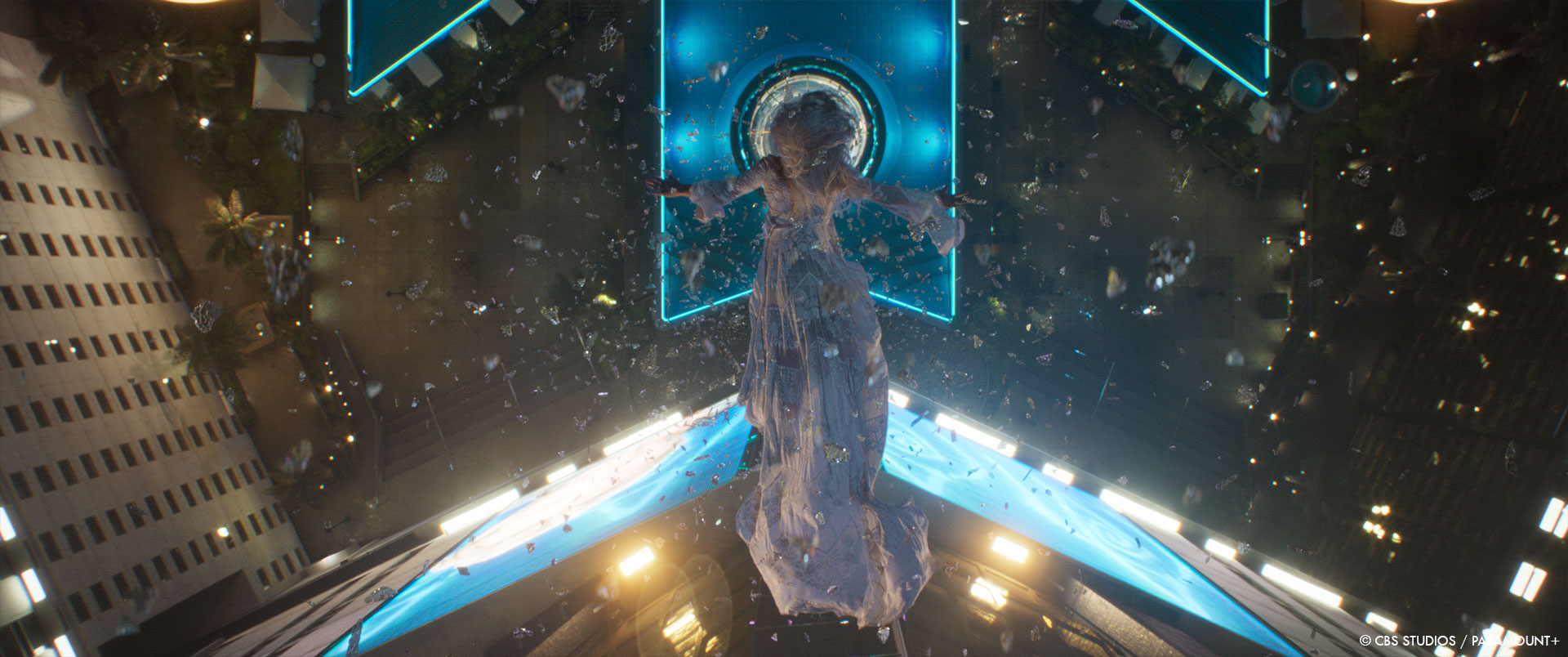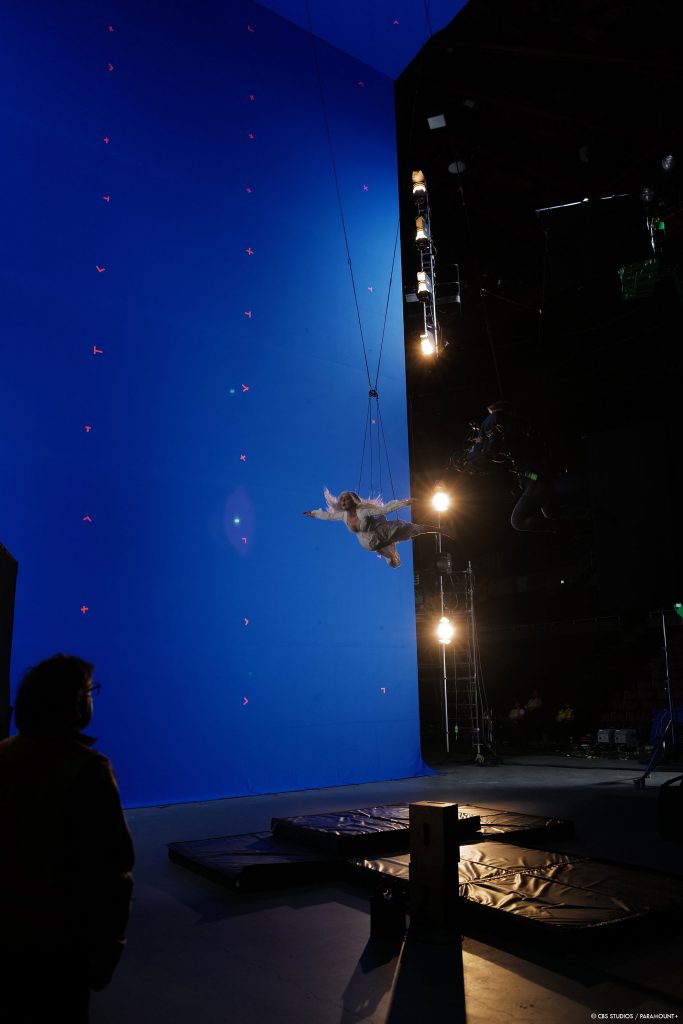As a VFX Supervisor, Jake Braver has taken care the visual effects for various films such as The Ballad Of Buster Scruggs, Foxcatcher, John Wick, Hostiles, and Birdman. He explains to us today about his work as Visual Effects Supervisor, Producer, and 2nd Unit Director on the Paramount+ series The Stand!
How did you get involved on this series?
I’ve been involved on and off with this project for seven years. First when the project was going to be a feature at Warner Brothers, then I was kindly asked by the producers to join the team once it became a series at Paramount+.
How was the collaboration with the showrunners and directors?
Ben Cavell and Taylor Elmore were fantastic partners. All the directors really dug into the process with us. Tucker, Bridget and Danielle, Chris and Vincenzo were great directors to work with, each bringing their own creative perspective. It was very collaborative, and the directors were all very respectful of the greater needs of the story.
What was their approach and expectations about the visual effects?
Ben and Taylor had never made a series with so many visual effects before. They had a lot of faith and trust in me, our team, and our vendors. They really embraced (and I think enjoyed!) gaining a deeper understanding of the visual effects process. The studio’s expectations for the series and VFX were very high. It was made clear they wanted to create a world as sweeping and all encompassing as the original tome, and with that there was the expectation of epic VFX.
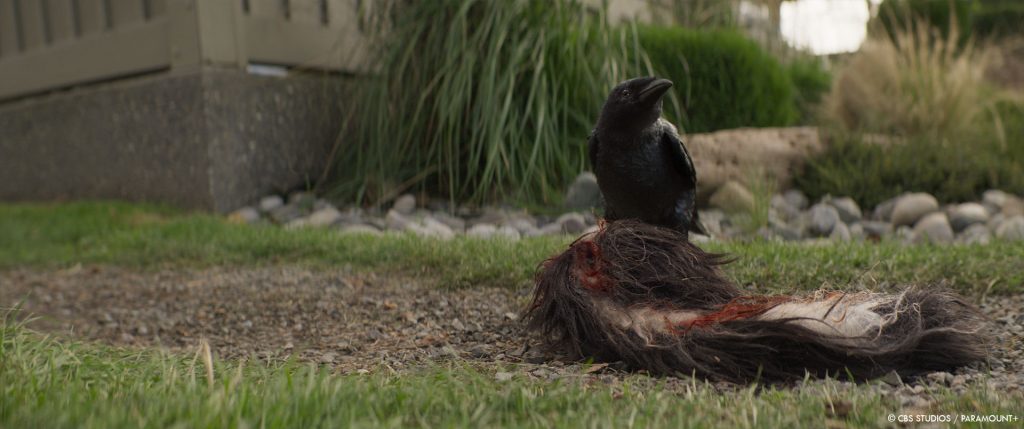
How did you organize the work with your VFX Producer?
ILM was involved from the very beginning, even before we were green-lit. Stefan Drury at ILM was a terrific partner and very keen to get involved early. Of the total 3,000 shots in the show, ILM took on half, handling all of the CG creatures, Flagg’s powers, the tube necks, Mother Abagail fixes, and all of the Las Vegas environment work which includes Nadine’s Fall and the Hand of God sequence.
Important Looking Pirates handled the Boulder, Colorado environment, Mother Abagail’s house explosion, the Stovington facility, the missile silo, and all the work in the Gully.
Spin took on Flagg’s dream desert set, as well as some really tricky odds and ends.
Phosphene was primarily tasked with Trashcan Man’s Mad Vision; dead Nadine; Flagg’s door explosion; the “Flagg storm” sequence; Mother Abagail’s deathbed aging; Harold and Nadine’s Motorcycle chase; and Harold’s death.
Folks took New York City, the body dump in Boulder, and handled quite a lot of the shots from our delayed Las Vegas desert shoot and lots of odds and ends.
Zoic took on the work in episodes 3 and 4 to make Harold and Frannie’s journey across the country.
Cinesite worked on New York City, in concert with Folks.
Pixomondo took on what we called the “Flagg pin” shot: a 25 second-long, fully CG shot at the end of the series, and some other assorted complex work.
The Third Floor prevised Nadine’s Fall and Hand of God .
Proof prevised the Hoover Dam and well sequences, along with some shots that didn’t end up in the show.
Territory created all the New Vegas graphics
Wylie served as our in-house team (which became an “at-their-house” team) taking care of many removals, split screens, and fixes.
Studio 8 and Exceptional Minds also handled fixes and cleanup.
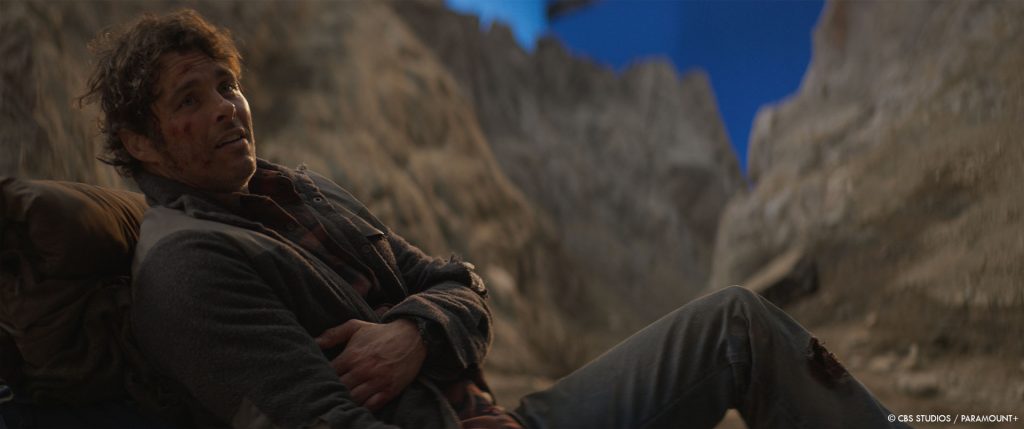
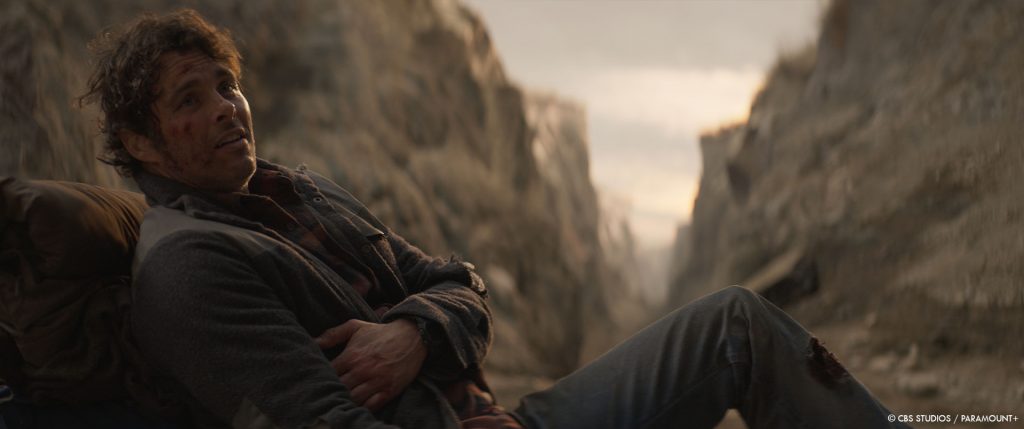
What was your approach for this end of the world series?
Try to work the count, wait for my pitch, and to make solid contact. 🙂
How did you empty New York of its population and create chaos in the streets?
Much of the New York scenes were shot in downtown Vancouver. We closed off about six blocks of downtown Vancouver for a few days and shot all the scenes there. I directed a three-day unit in NYC in October 2019, and mainly focused on filming some plates and scenes that had to be shot in NYC to really be the connective tissue and to set the environment. It’s always really hard trying to make any other city look like NYC, but since I was born in the city, I have had a pretty critical eye.
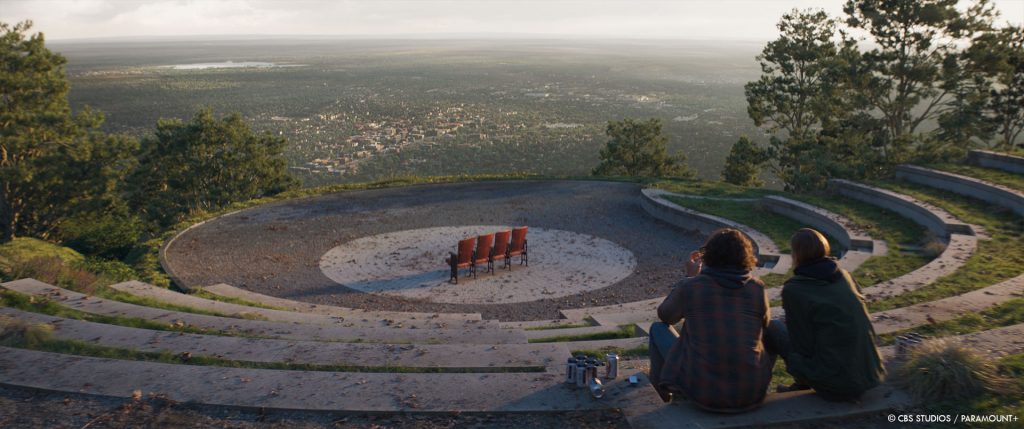
Did you receive specific indications and influences for this “empty” New York?
In the story, the virus kills 99.9% of the population within days. Ben and I talked through the logic of the fact people would either do two things: try to leave the city, causing lots of traffic and chaos; or, for example, those who were sick at home and dying in the middle of performing basic tasks—such as turning on the stove to make tea—that lead to fires or general destruction. There were no field hospitals, or any real looting (except for the people who were immune). I often described emptying NYC like an off switch — the disease progressed so quickly the transitional time was gone. We wanted all the destruction to come from an accidental stove fire, fleeing the city, or a bus crash. It was interesting working in little details like that.
The environments outside the cities have dramatically changed too. Can you elaborates about them?
If 99.9% of the population pretty much died overnight, we wanted to show what that looked like in the more rural areas. We were able to close large stretches of road, but still had lots of removals, and as time went on, adding details like overgrown grass and debris. Most of these shots were handled by Zoic and Folks.
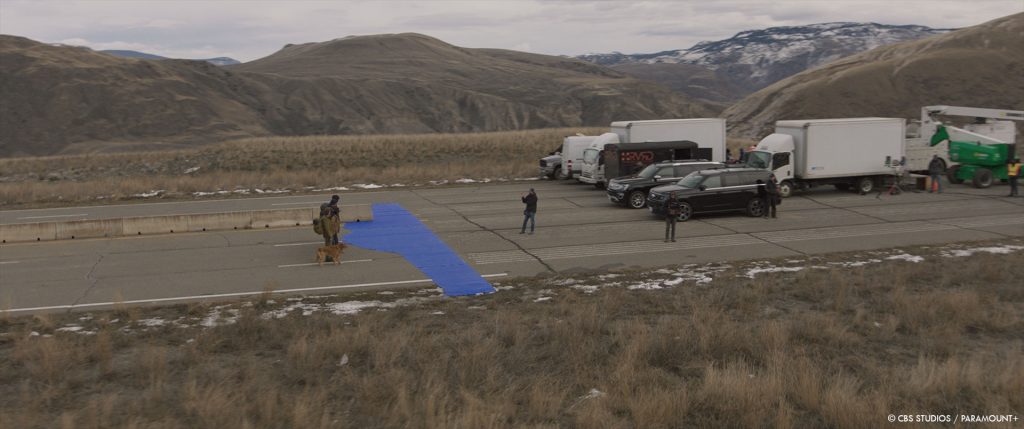
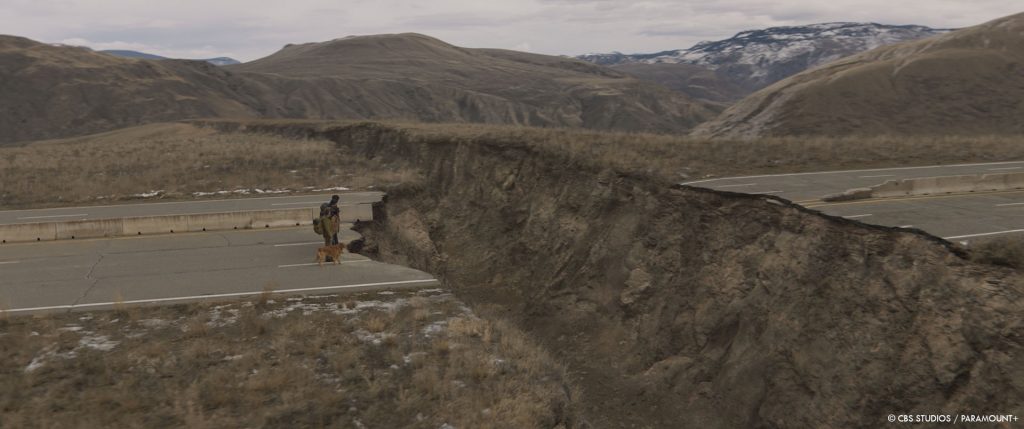
Can you explain in detail about the creation of New Vegas?
New Vegas was something I worked on for a long time with the production designer, Aaron Haye. It was the very first thing he and I dove into together. We scouted Las Vegas and climbed on the roofs of maybe half the casinos looking for the perfect place for Flagg. In the end, we ended up working with our first choice, Planet Hollywood and the great folks at Caesars Entertainment. Once we knew where we were starting from, we began incorporating our design elements into the footprint of Planet Hollywood. The Inferno was a collaboration between Aaron and myself, with ILM’s Art Department providing the concept art and Jason Horley leading the charge at ILM. After some initial rounds, we came to this angular, parasitic glass structure that wrapped around Planet Hollywood.
The rest of the strip in our story world was filled with people who were loyal to Flagg. The Inferno was the only place to stay, so the other casinos were shuttered and essentially covered with tarps, Flagg propaganda, and sigil. The horrific crucifixions down the center of the strip were a mix of filmed elements and CG. We shot in Vegas the first time in December 2019. In addition to capturing scenes, we shot lots of plates and undertook a large scale Lidar and photography expedition aiming to capture Planet Hollywood and the surrounding area.
The interior of the Inferno was actually a location in Surry, BC, and everything from the third floor and up is CG. To populate those levels, we created a crowd of digital extras using scans of actual extras. To bring them to life, we did a motion capture shoot and then peppered in bespoke animation as needed.
When designing the interior, Aaron and I sort of worked backwards, thinking about what elements we would want to see destroyed, which is how the 19-ton, fully CG chandelier came to be.
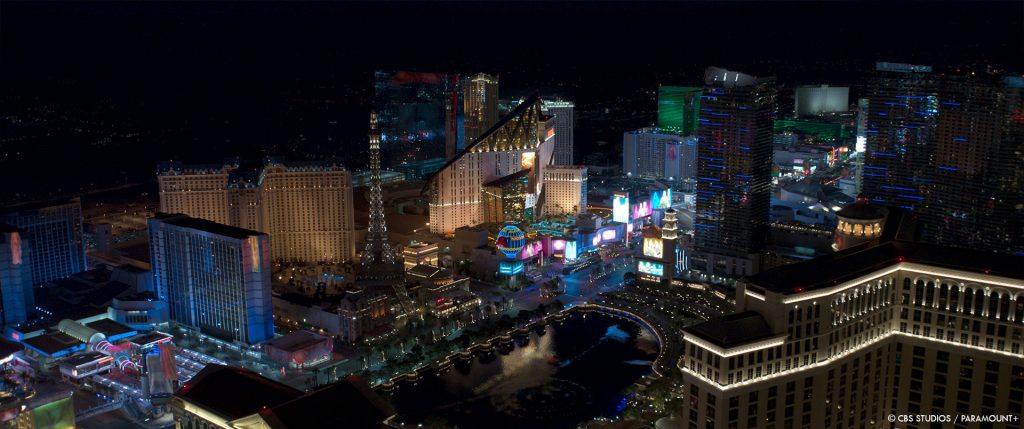
New Vegas is really an island of lights in the night and the desert. How did you handle this lighting challenge?
I’m so glad you called it that! That was the idea, and I used those exact words when designing the fully CG establishers that take you in and out of New Vegas. Vegas is really lit by video screens that put out massive amounts of light at night. We always stayed true to this and were mindful to keep our color palette matching in shots that we were not fully replacing. It was critical that the lights in the CG parts of Vegas drove the lighting of the environment around it—such as the large screens on the exterior of the Inferno.
How did you create the various powers of Randall Flagg?
Flagg has a variety of powers. Levitation was primarily a wire gag or a teeter-totter. When Flagg blows through the door of his suite in pursuit of Bobby Terry, Phosphene created a CG door and great sims of the wood splinters, debris, and dust.
His ‘true self’ demon look was created by ILM. We wanted him to feel immortal and ancient when you saw him in his true form and it was important to the creatives that we stayed away from the typical demonic tropes. After a lot of design work with Fred Palacio at ILM, we landed on a look that had very interesting scarification on his skin—a practice that goes back to 8000 B.C.E. Ben, Taylor and I thought that was a good way to tell the story of Flagg’s timelessness.
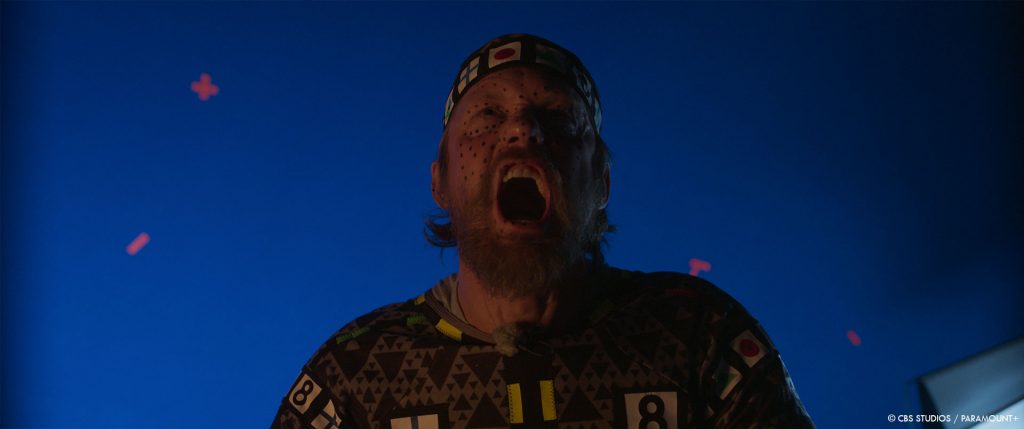
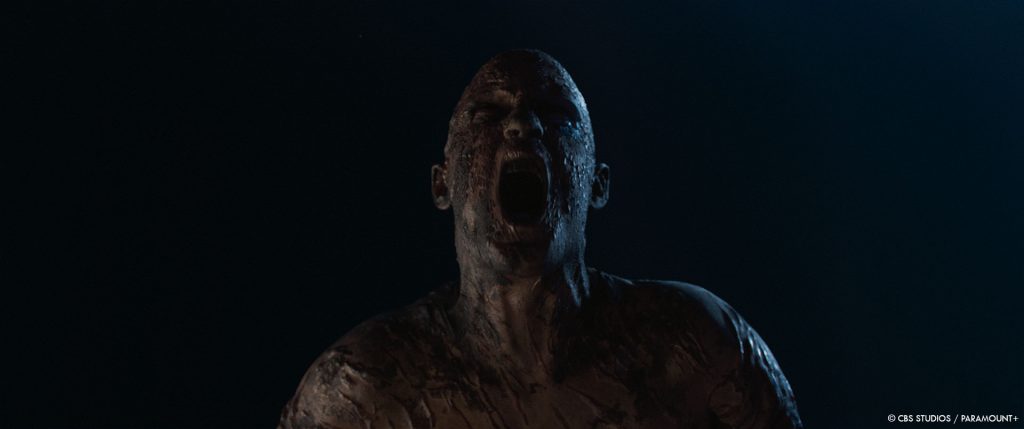
What was your approach to create the tragic fall in the void of Nadine?
Nadine is able to break free of Flagg’s grip and chooses to end her own life rather than birth his demonic spawn. We wanted this moment to feel a bit surreal and almost operatic—with Nadine at peace with her sacrifice for the greater good.
Can you explain in detail about the creation of this sequence?
Well, we started in previs. Jason Thielen at The Third Floor and I sat together for an afternoon (pre-COVID) and did a bit of a virtual scout. I took some angles and ideas back to Ben and Taylor, and we talked about what we did and didn’t like. Then, Jason and I regrouped and he did a first pass in previs, which we kicked around for a while. Once the director Vincenzo started prepping, one of the first things he did was give us some excellent feedback and we locked down the previs very quickly thereafter.
I shot the plates in Vegas in December 2019 and we shot all the rest in January and February 2020, right before lockdown.There were really two parts to the sequence— the lead up before Nadine goes out the window and the actual fall.
I directed all of Nadine’s fall on second unit. We had Amber on a descender and shot her falling from 60 feet. I thought it was critical to not just have her hanging on wires while blowing air at her—but to actually drop her and then see the force against her body. I think we did about 20 takes to get all the coverage. She was a trooper!
The sequence was assembled almost identically to the previs. Each shot really had a different approach—some were straightforward comps, others were handoffs to digi-doubles, and some are entirely CG. ILM did fantastic work. I think this sequence was a pet project of Laurent Huguenot’s and I really credit him with leading the team to such a successful conclusion with that sequence.
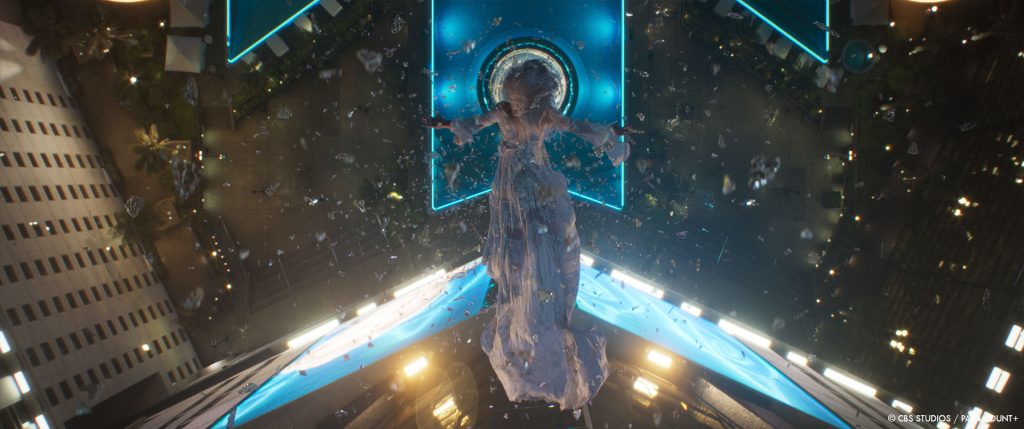
How did you create the various FX elements such as the smoke, explosion and the lightnings?
We did lots of development early on to inform what we wanted the lightning to look like, and had ILM work with us to create lots of concept art and key frame images. It was very important that it look like lightning, so we studied lots of references of lightning, electricity, and high voltage arcs. The cloud is an art-directed fluid simulation, composited over aerial footage I shot in Las Vegas, using volumetric rendering in Houdini.
The whole Hand of God sequence was extensively previs’d, so we knew exactly where the lightning was hitting, and the reactions it would cause in the environment. The trick with the lightning was creating realistic, organic shapes that grow and decay over the course of a few frames in a very specific way— too quick and it didn’t have the desired effect; too slow and it looked odd.
The entire top half of the interior of the Inferno was CG, and at moments the entire set was too. We used ILM’s proprietary AR technology to help us visualize the set extensions. It was a nice tool to help frame up the shots, taking into account the yet to be created digital floors.
For various reasons, all of the destruction in the finale was handled by VFX. There were no impacts, sparks, glass or blood on set; nor was there any fire or debris. This made it easier to have intensive interaction between the elements and the environment. The lightning strikes and impacts of the lightning bolts onto the walls were created using CG walls with internal structure such as plaster, supports, plywood, wires, and concrete. We then ran a simulation to create the proper random nature of the event.
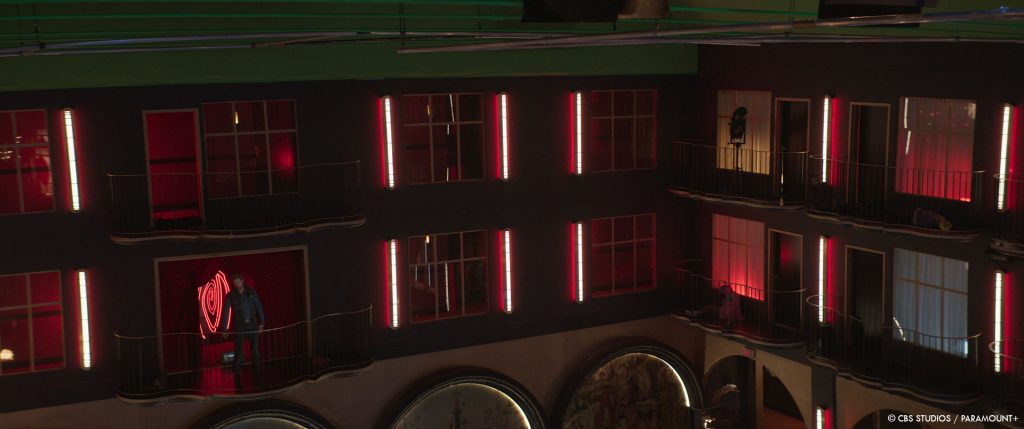
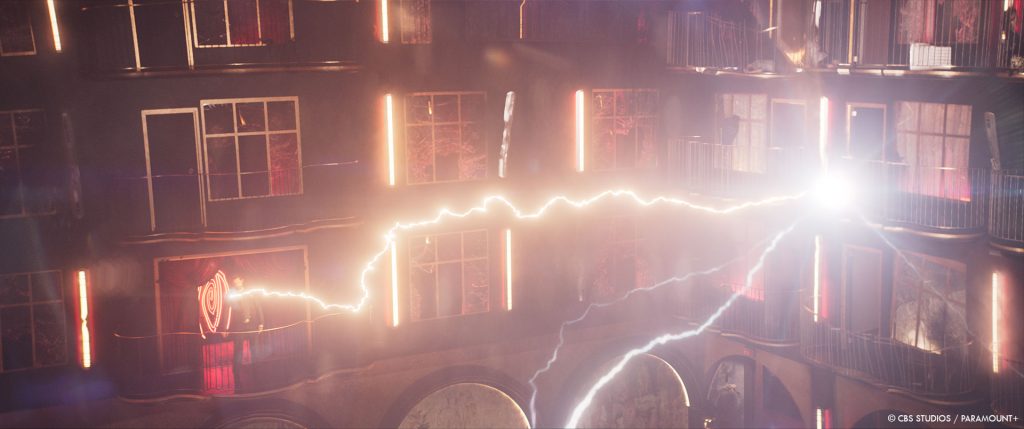
Can you explain in detail about the nuclear explosion?
There are a ton of references of nuke blasts, but not so many from the close perspective we needed. Again, I flew around Vegas in the previs stage to find angles we liked— and I shot aerial plates in Las Vegas from those angles. The Inferno and surrounding area were already built in CG, but the blast required building these environments so they could be destroyed. The blast itself is a fluid simulation that drove hundreds of smaller simulations to create the effect. Some of those shots are entirely CG, and some use aerial plates with huge chunks of CG. Story-wise, we felt it was important and ultimately satisfying to see the inferno rip apart. The simulation was so complex that it took several days to update and render.
The series is really gore. How did you enhanced this aspect?
I’m going to choose to take that as a compliment! 99.9% of the prosthetics work were touched up in the VFX pipeline in some way. Some were big overhauls, some just cleanup. We always used what felt like the right methodology for the shot.
As an example, in the Hand of God sequence, many characters (Julie, Ratwoman, Lloyd, and some unlucky others) were filmed so we could capture the initial hit with the actor before handing it off to digital versions of the characters. We ran a soft body simulation in Houdini to digitally shred their flesh and organs as they were hit by CG lightning, and ran additional fluid simulations to create the blood.
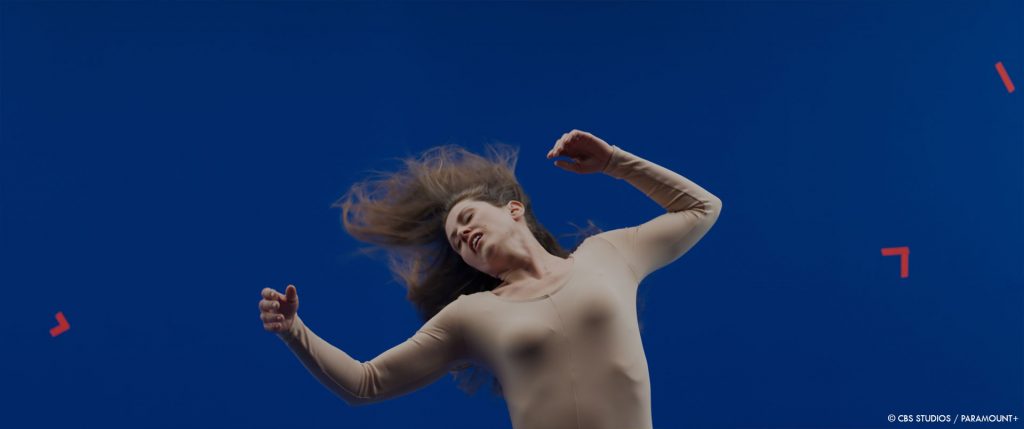
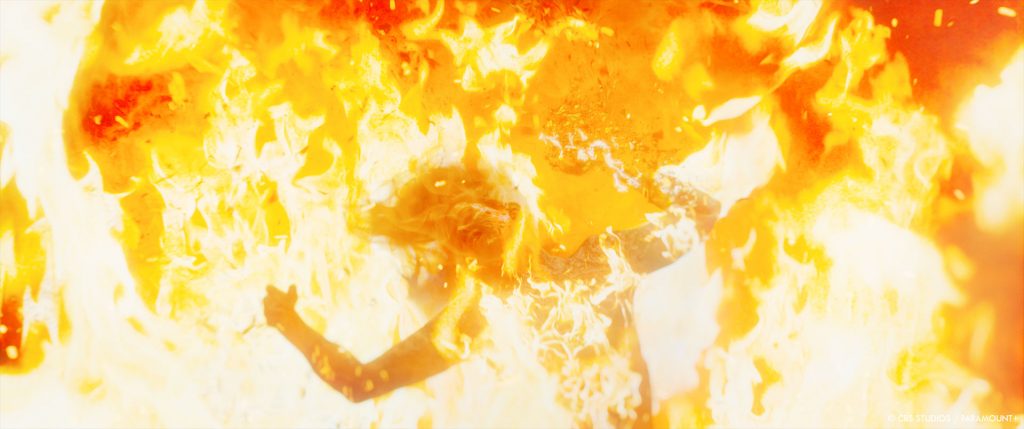
Which sequence or shot was the most challenging?
Honestly, our biggest challenge was that we shut down due to COVID, having gotten everything except three days of critical plates and scans. There was a time when we weren’t sure if we would be able to get that stuff, so we had many long calls talking about plans B though Y, with dates we needed to pull the triggers on those. Phillip Hoffman must have done at least 12 different permutations of schedules and budgets. At the last second before we had to enact the backup plans, we got approval to shoot. We shot for about a week in Nevada when it was 116 degrees; but don’t worry, the face shields and masks really cooled you off…
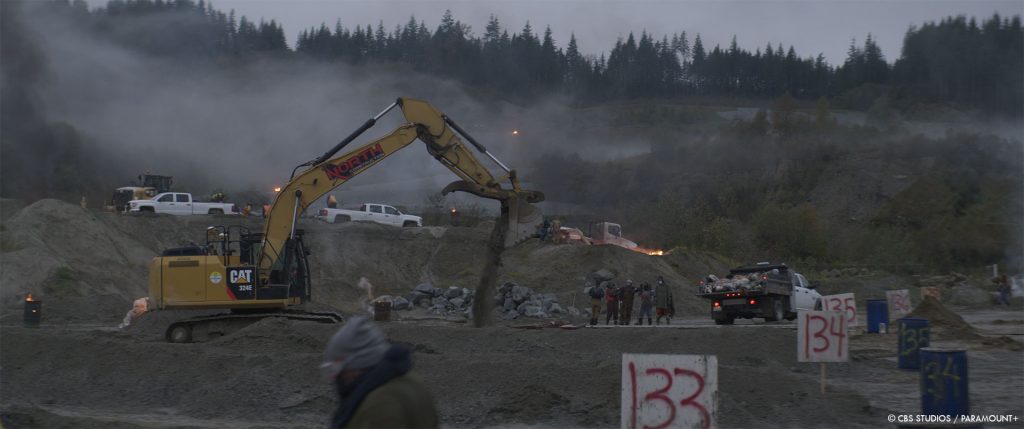
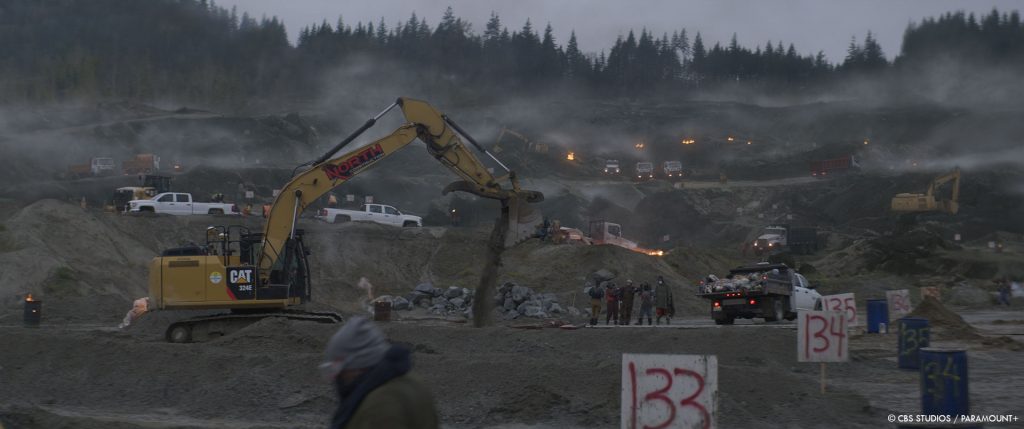
Did you want to reveal any other invisible effects?
Nothing I can reveal. 🙂
How was the collaboration with the various vendors’ VFX Supervisors?
Thankfully I had worked with most of them before; and those who were new to me had worked with my VFX Producer Phillip Hoffman, which was comforting.
I was also very lucky that we had such amazing supervisors *takes deep breath* Laurent Hugueniot, Vincent Papaix, Scott Pritchard, Hayden Jones (ILM), Martin Hernblad (ILP), Jeff Campbell (Spin), John Bair (Phosphene), Laurent Spillemaecker (Folks), Mag Sarnowska (Wylie), Richard Patterson and Andrew Orloff (Zoic), Edson Williams (Lola), Goran Backman (Pixomondo), Eric Benedict (Proof), Jason Thielen (The Third Floor), and Marti Romances (Territory).
Everyone did an amazing job and I really valued their points of view, honesty and insight. There were lots of calls, cineSync’s, and emails at all hours of the day.
The facility supervisors and production staff were not only supervising their work, but helping their teams get set up remotely and keeping the trains on the tracks. I always try to have faculty supervisors on set when it makes sense. We were lucky to have Laurent and Vincent on set for a bit in Vancouver, which was critical in creating a shared language to discuss more of the complex work. My wonderful on-set supervisor, Norman Kruesmann, and amazing data wrangler, Paula Zulkoskey, were happy to have the extra hands.
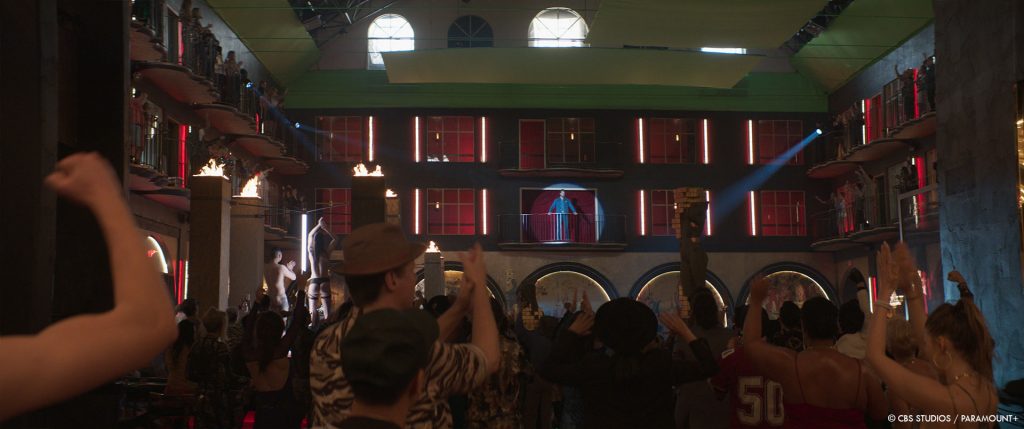
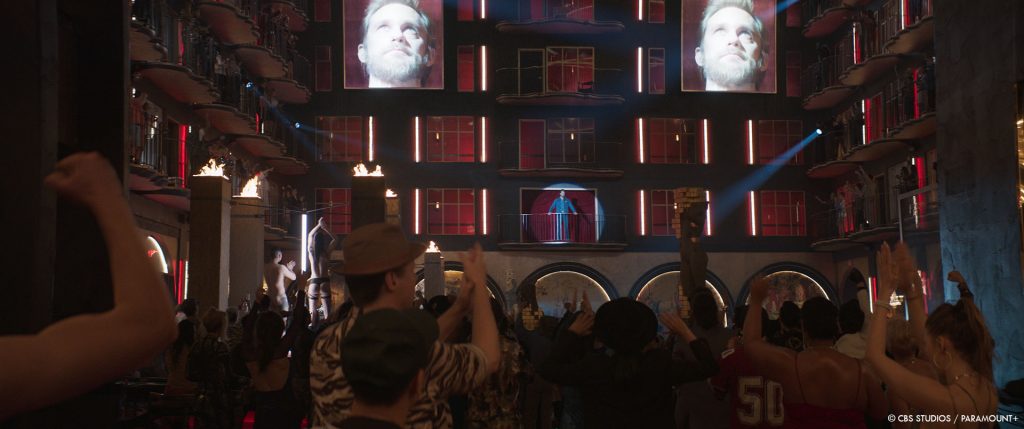
Is there something specific that gives you some really short nights?
It’s kind of always a race to the finish, no matter what. There were two big shots ILM was doing that the edit got played with way later than it should have been, and I think that gave a lot of people sleepless nights.
What is your favorite shot or sequence?
This is like picking your favorite child…I’m very proud of all the work.
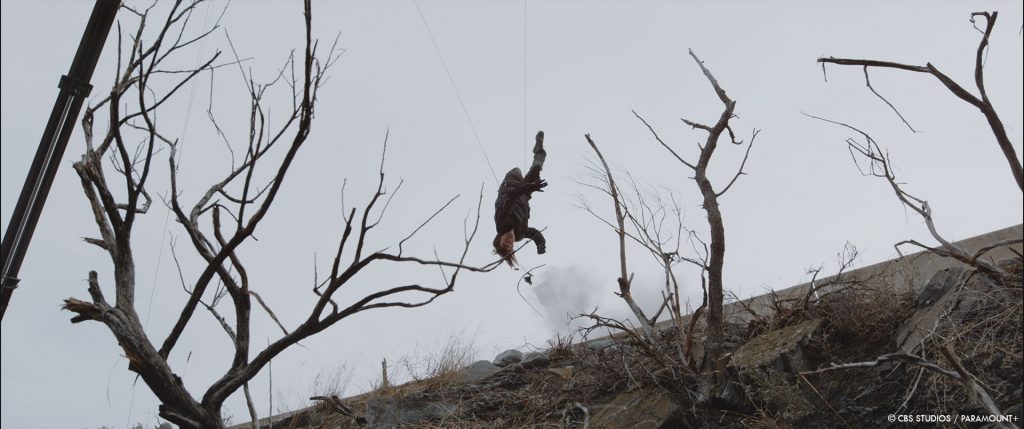
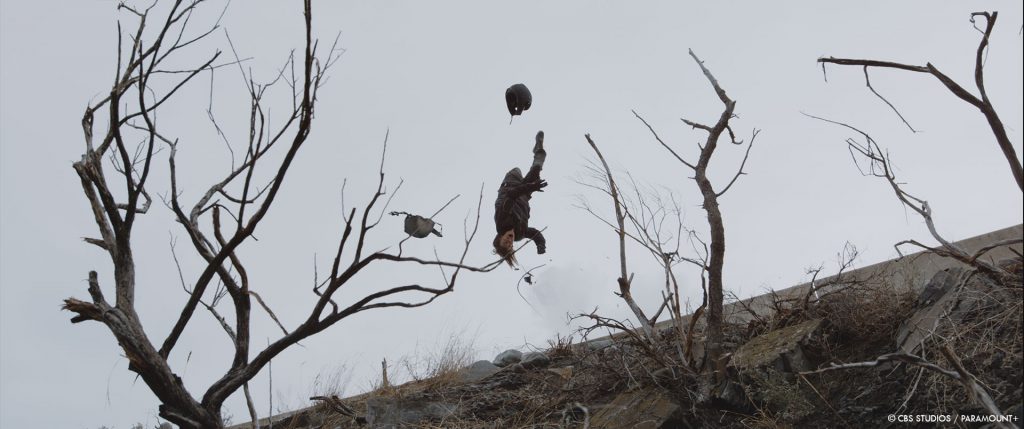
What is your best memory on this show?
I have so many great memories from the show with great crews in Vancouver, Nevada, and New York. Shutting down The Strip for a few nights is always fun.
I’ll also add that we went remote right at the end of principal photography in March 2020, leading to a fully remote post. We were charting the map the same time everyone else was, and although it was stressful, I felt a lot of unity in the community. I would talk to supervisors and producers on other projects about how they were handling the challenges of remote post, and they would ask me the same questions.
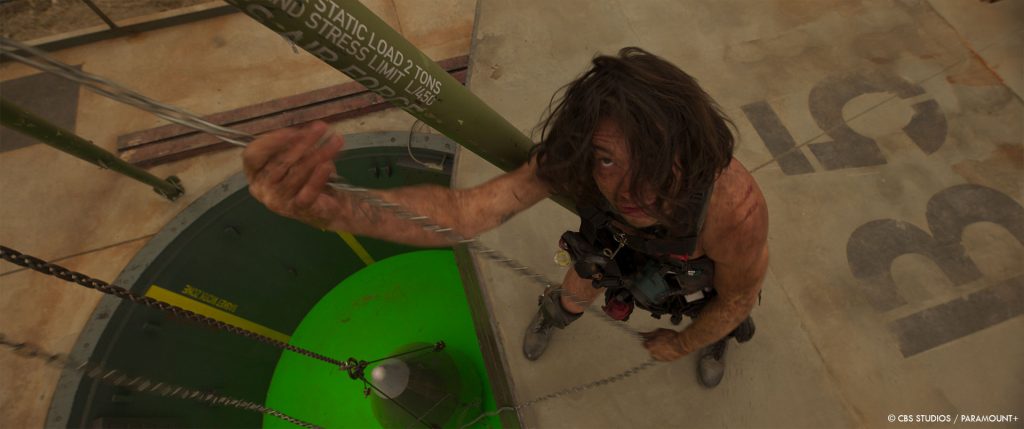
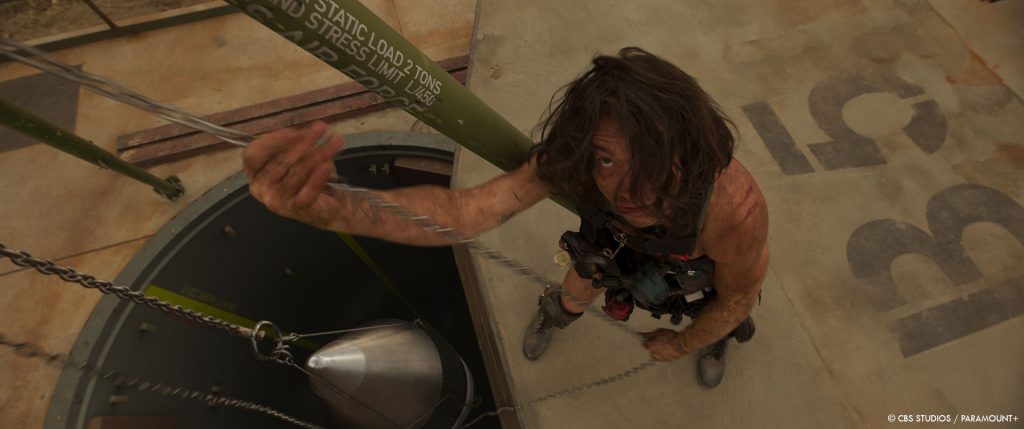
How long have you worked on this show?
Two and a half years!
What’s the VFX shots count?
About 2800 shots delivered. 3000 finaled.
What was the size of your team?
About seven people on the production side, with three or four rolling on and off for our two Vegas and New York units.
The core team that got us through a very challenging and fully remote post were VFX Producer Phil Hoffman, VFX Editor Steven Kenny, VFX Production Manager Liz Alverez, VFX Coordinator Chelsea Wynne, and Assnt VFX Editor Ryan Jackson.
And a special shout out to Mike Enriquez!
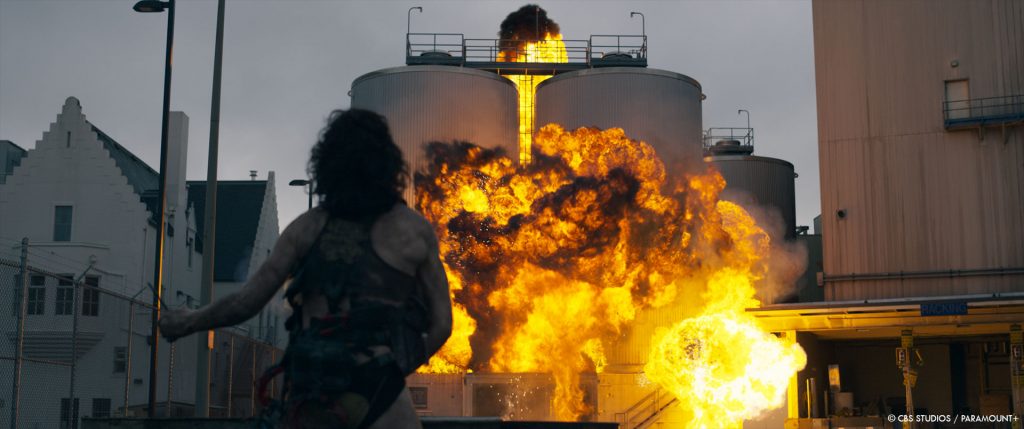
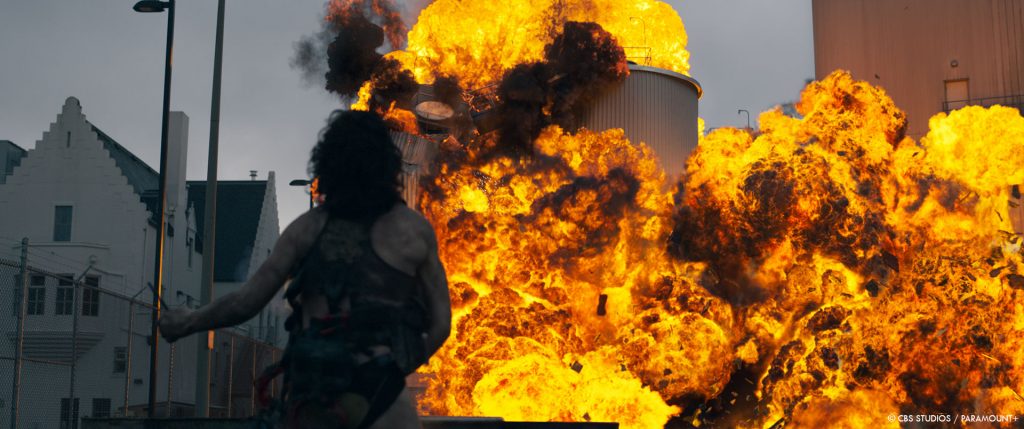
What is your next project?
I can’t say yet…
What are the four movies that gave you the passion for cinema?
A big thanks for your time.
// The Stand – Exclusive VFX Breakdown
WANT TO KNOW MORE?
ILM: Dedicated page about The Stand on ILM website.
Paramount+: You can now watch The Stand on Paramount+.
© Vincent Frei – The Art of VFX – 2021


